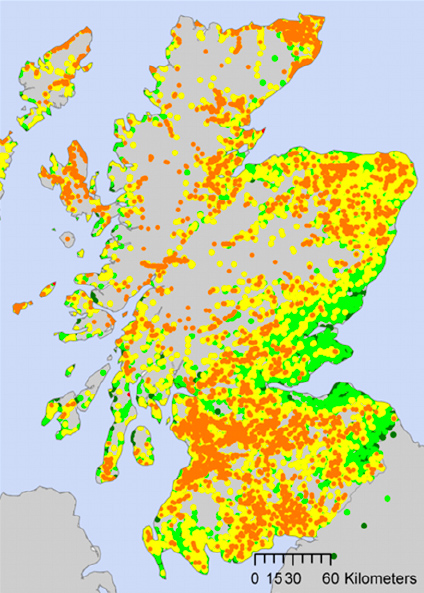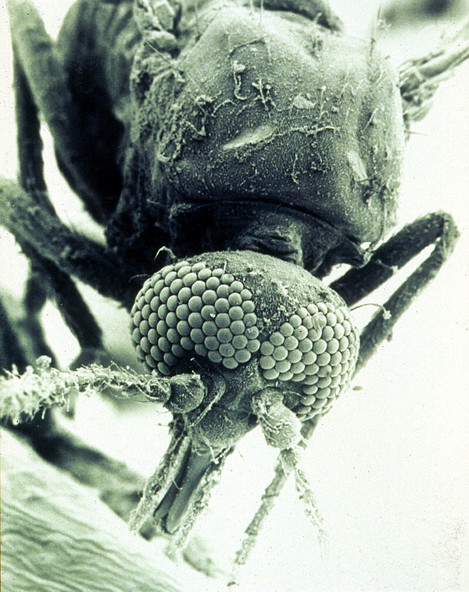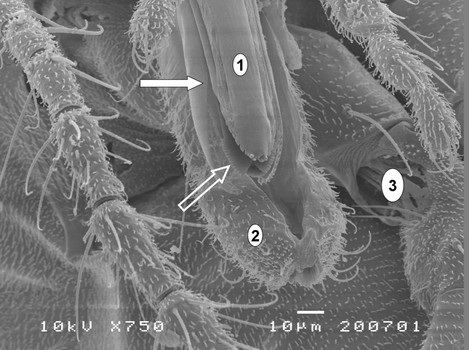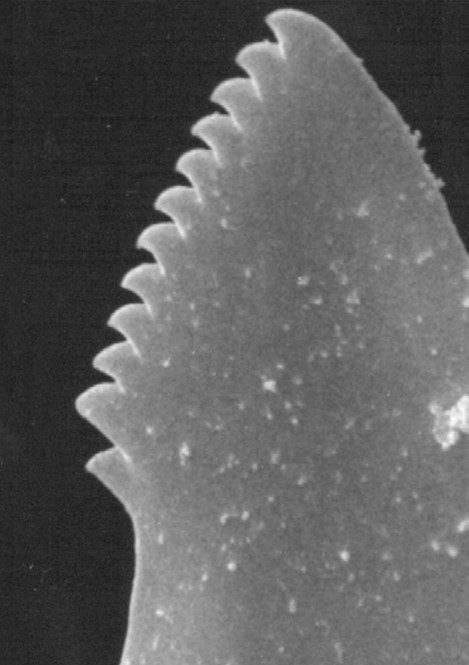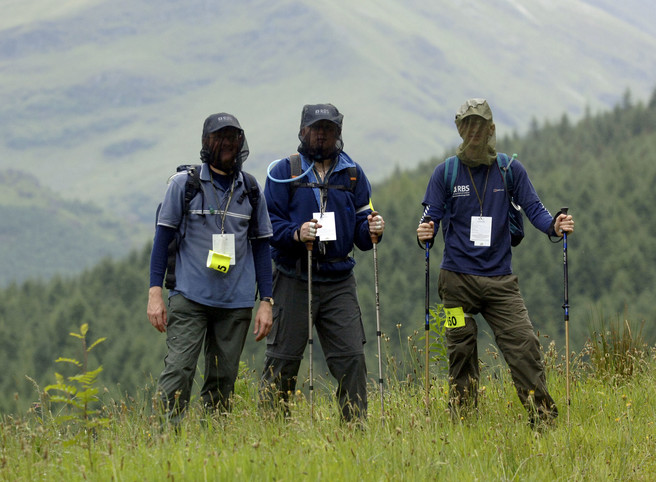Culicoides impunctatus goetghebuer or Meanbh-chuileag (Gaelic - tiny fly)

Tim Parkin
Amateur Photographer who plays with big cameras and film when in between digital photographs.
The dreaded midge is the bane of many a summer photographer. Its insidious zzzz as you prepare your twilight masterpiece is enough to distract the hardiest of the outdoors brigade. And the fear is no longer confined to those North of the border; the humble midge is now an international creature and no Scottish independence will hold them back. They’ve been sighted in large numbers in most parts of Wales, Cornwall, Devon - most of the south coast in fact. There is no escape. The problem in Scotland is so bad that they lose nearly a quarter of a billion pounds in revenue every year. And it has been the same for hundreds of years - back in 1872 even Queen Victoria was forced to abandon a Highland picnic after complaining of being 'half-devoured' by the clouds of midges. Around the time of the Jacobite Rising (1745), the English commander in chief , Marshall Wade, misheard the Gaelic word for midge, "Chiuleag", and having experienced their incessant attacks, coined the word "hooligans".
Now not all small gnat-like insects are the dreaded Highland midge, which has a hell of a reputation, and we do also have mosquitos (of a few sorts) in the southern parts of the UK. So just what is the highland midge and how does it do what it does.
It isn’t just Scotland that has a problem with midges, though around the rest of the world they may be called ‘sandflies’, ‘punkies’, ‘no-see-ums’, no-nos’, ‘moose-flies’ or ‘biting gnats’. Iceland even has a town and lake named after them (Myvatn - literally ‘midge’).
The Highland Midge (I thought they deserve capitals) is only 1.5mm long and can get through even smaller gaps. It’s only the female of the species that bites (the males like pretty flowers instead) and even then only 10% of the midge population ends up biting mammals. This is because they don’t need to feed until they have gone through a whole egg laying cycle. This may explain why the midges that come out early don’t seem to bite as much. It may also explain how successful midges are in areas where there are very few mammals.
The bite itself is not a piercing action like a mosquito, instead the midge has a pair of mandibles that have been described as like a pair of pinking shears on the edge of a pipe. These cut away a patch of skin under the epidermis and capillary bleeding creates a pool of blood from which they feed. The mouthparts also inject anti-coagulant which stimulates histamine in the blood (hence the irritation and why antihistamines are good). Once a midge has bitten it also shouts out to its sisters that there is good feeding to be had (via pheromones).
The nice thing about this way of biting, as opposed to the mosquito’s "deep syringe” style sucking, is that they can’t bite through clothes. This means that simply covering up will stop them in their tracks.
It also appears that the typical cloud of midges won’t be females and won’t necessarily be a problem for bites. However, these large groups do attract females so there is still a danger.
So what does your average midge like? Well they don’t like too much sun, cloudy days and twilight are happy times for midges. They’re also not too happy in the wind and anything over about 6 mph causes them to stop flying. Anything dryer than 50% humidity also annoys them but they love it wet and as it approaches 90% humidity they go wild! They also don’t like it cold so below 9 degrees C they slow down and eventually stop at temperatures below 3 degrees C.
It has also been suggested that a good cold winter will reduce midge numbers but sadly this isn’t true as their larvae have been found 2m under the surface, pretty much immunising them from anything bar permafrost.
What does cause a lowering of numbers is a good dry spring and summer. They need water in the soil to survive so as it dries out they die off. However, any subsequent rain will set off the life cycle again.
How do midges find you though? Their eyesight isn’t great and they can’t hear anything but they have an incredible sense of smell via their antenna. They can pick up very low levels of carbon dioxide and also can sense lactic acids and acetones/ketones in sweat which makes sense as they have been evolved into finding big sweaty oxygen breathing mammals.
It has been anecdotally observed that their poor eyesight means they can see general differences in shade and so clothing that matches the environment (generally light clothing) is probably advisable.
So here’s a list of things to do or don’t do to avoid getting bitten
- Avoid woodland (trees increase humidity and reduce light levels)
- Avoid boggy or damp areas. The edges of lakes and ponds, marsh, streams, etc.
- Try to stay upwind of damp, shaded areas.
- Stay in the sun, avoid shade
- Avoid the golden hour (yeah, as if that is going to happen).
- Wear light-coloured clothes.
- Stay high, above 700m there are fewer midges (apart from Rannoch Moor!)
- Shower before going out and use clean clothes - the sweat smell (lactic acids) attracts them
- Don’t use anything ‘scented’ as some smells can attract midges
- Oh, and don't be tall (or fat if you're a woman) - tests from Aberdeen university suggested these people were bitten first and most.
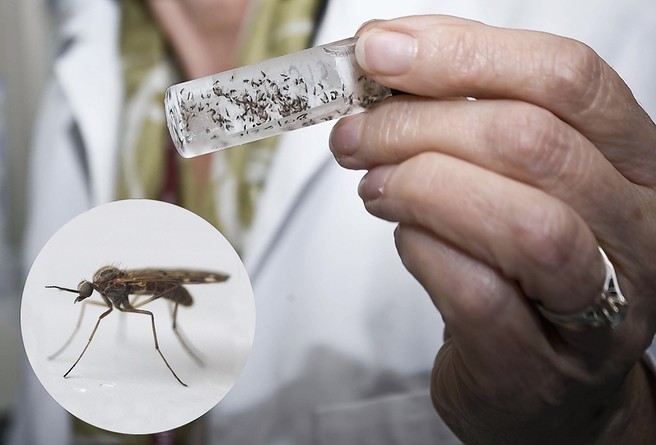
Jenny Mordue, retired professor in the department of zoology at the university of Aberdeen, has found that the Scottish midges prefer tall men and fat women.
Midge activity starts in April and they are active on the wing until October. Within this period there are often two peaks in emergence, one in late May/early June and the second in late July/early August.
So can we repel or stop midges biting?
Historically humans have used plants to repel biting insects, they would either bring bruised leaves of certain plants into the house or burn plants as crude fumigants. Later oils were extracted from plants and used on the skin or clothes. Plant-based repellents are still used and some are quite effective (see below)
Here is a list of the possible active chemicals used in insect repellants.
DEET (Diethyltoluamide)
DEET isn’t a very pleasant substance to use however, it smells bad, is greasy, stings eyes and scratches and tastes awful. It can also dissolve plastics and synthetic materials such as spandex, rayon and vinyl (It has no effect on nylon, wool, or cotton). It may also damage some parts of clothing and be careful applying to waterproof coatings.
It is available in various concentrations and the higher concentrations (and those that use microencapsulation) will last longer between applications. However, there doesn’t seem to be much increase above 50% strength.
Icaridin/Picaridin (Saltidin) Bayrepel
Picaridin is a synthetic repellent made to resemble piperine which is found in plants that produce black pepper. It has been used in Europe since 1998 but only passed as safe in America since 2005. In Europe, it has become the most popular repellant and is matching DEET in the US. In performance trials, Picaridin matched DEET in most tests and was more effective against some flies (and lasted longer than DEET in its encapsulated form). There is strong anecdotal evidence that Picaridin is also more effective against our dreaded Highland Midge! DEET is tested as better than Picaridin at repelling ticks but only for a short period of time (possibly only two hours) whereas Picaridin initial effect is less but it lasts for the full application time (up to 8 hours)
Most Picaridin is available at 20% concentration although 30% concentrations are being introduced. Also, look for encapsulated versions.
The biggest advantage of Picaridin is that it is odourless, not greasy, doesn’t sting and doesn’t melt things.
Picaridin is also available in a towelette which makes it a lot lighter to carry and safer to store in camera bag or jacket zipped pockets.
We would recommend Pyramid Trek Midge & Tick (which also contains botanicals and is encapsulated for long life), Avon Skin So Soft Bug Guard Picaridin (towelettes are good although both are hard to find in UK), Smidge or Autan (cheapest when I looked)
IR3535 [Also known as 3535 or EBAAP (Ethyl Butylacetylaminopropionate)]
The majority of studies suggest that IR3535 is not as effective as a repellant as Picaridin and DEET. However in EPA product reviews it appears ranked better than many DEET and Picaridin formulas. One of the advantages of IR3535 is that it can be combined with a sunscreen, has none of the nastiness of DEET, is ranked as safer than DEET and Picaridin and is very effective against ticks. The possible shorter period of protection may work well when combined with a sun screen which needs reapplication every 2 hours.
We would recommend buying the Avon Skin So Soft Expedition Formula (Although Expel appear to be the only UK retailer and they combine it with DEET).
Oil of Lemon Eucalyptus (P-menthane-3,8-diol,Citriodiol,PMD)
It was discovered in the 1960s during mass screenings of plants used in Chinese traditional medicine. The perfume industry uses this but it turned out that one of the side products of the generation of the perfume actually worked better.
Generally considered to be the only botanical type product to be recommended in mosquito-borne disease areas. However, it has much less testing than either DEET, Picaridin or IR3535 and the testing it has had has given it a worse toxicity (natural isn’t necessarily better!)
Look for trade name Citrepel
Citronella
Can work well but needs to be encapsulated or mixed with a large molecule like vanillin in order to increase longevity - otherwise, it only lasts a short time.
Works better as an atomiser but nowhere near DEET, Picaridin, IR3535 or PMD
Botanicals
Thyme oil, geraniol, peppermint oil, cedar oil, patchouli, and clove (amongst others). All give some protection but not recommended and have poor longevity (less than an hour).
Avon Skin So Soft Bath Oil
This is the fabled Skin so Soft, oft recommended as the one that the army uses. Somehow I find this hard to believe as, although it has some efficacy, it seems to work more by drowning midges than repelling them so you have to use a lot of the stuff and apply regularly. However, in some trials it has been classed as 85% as effective as DEET against midges. Make your own mind up on this one!
Vitamin B (Marmite)
Probably only works if you cover your body with it. To be fair, there are many people who think it works so make your own mind up. There are only a few tests and these showed no effect on mosquitoes (midges no tested).
Permethrin (FOr Clothing)
Unlike the other chemicals mentioned here, permethrin is not just a repellant but an insecticide as well. It will repel but then kill insects that land on it. However it is designed to be applied to clothing and there are methods to embed it in clothing in a form of very slow release capsule (normally OK for 60-70 washes whereas the spray application is probably only good for 10 washes).
And it does work - in one trial in Alaska a group of volunteers went out with a combination of DEET, Permethrin clothing, both or none and the results were 1 bite per hour for both, 4 bits per hour for DEET only, 78 bites per hour for Permethrin clothing only and 1,188 bites per hour for untreated.
You can treat your own clothes but be wary around cats as they can’t process Permethrin. Once it is dried it is safe around pets and children (even if it is rewetted). Permethrin is also very effective against ticks - buy a pair of socks!
The commercial insect treatments are either Insectshield (look for Rohan clothing), or Nosilife (Craghopper).
Sun Screen
There are warnings about using insect repellants and sun protection at the same time. However the guidance from health agencies is to apply the sun cream first and then wait at least 30 minutes before applying the insect repellant (I presume so the sun cream doesn’t “lock in” the repellant).
It should be noted that in a couple of public trials it was found that people didn’t put anywhere near enough on, didn’t make sure it was spread over all parts of the exposed skin and didn’t repeat application enough.
Zone Protection
Mosquito Coils
You can buy insecticide coils for burning like incense but don’t use them in enclosed spaces. They provide some amount of protection but have a risk of lung cancer.
Electric Insecticide Vapouriser
These typically work with Pyrethrin but some also use Neem Oil (a plant extract). Pyrethrin has been studied more than Neem Oil for safety and the smaller amount of studies of Neem Oil suggest possible infertility (it is used as an abortive agent in third world countries).
Midge Netting
If you're out in the absolute worst of midge weather, you can't really cope without a good midge net clothing. Don't get normal mosquito netting as midges can get through. You can either buy a headnet (best worn over a tilley style hat to keep the netting away from your head) or a full on midge netting jacket. A great new product is a midge headnet with a pair of glasses sealed into them (Netspex). These can help immensely as the midge netting can really obscure your vision.
Bite Relief (Easing the Itching)
There are a few ways to help with the after effects of midge bites. The NHS recommends keeping the site of the bite clean because of a risk of infections.
Avoid scratching the bite, which can spread infection-causing bacteria (and will increase histamine release causing it to itch more)
Treat the bite with a topical corticosteroid or antihistamine cream or lotion. Applying hydrocortisone cream (a corticosteroid) or Benadryl® cream (an antihistamine) several times can help minimize itching and lessen the urge to scratch!
You also can use an oral antihistamine such as Benadryl® to help relieve itching, especially if you have multiple bites.
Other treatments involve ammonia, lidocaine hydrochloride, baking soda, teatree, calomine, aloe-vera. Out of these ammonia seems to work quite well.
There are also the electric ‘shock’ treatment devices (actually just a zapper like you have in a piezo gas lighter). These work by stimulating the area (to relieve the itch) without increasing histamine production.
By far the best treatment I’ve come across is a device called “Bite Away” that heats up the bite to 50C for a short period of time. This supposedly helps to break down the anti-coagulant in the bite that causes the histamine reaction. It also relieves the itching (although it hurts for a second or two).
You can save money by using either end of a teaspoon run under the hot tap and then place it directly onto the bite (unless you have an older hot water system it shouldn’t be above 50 degrees C) but this isn’t so useful if you’re out camping.
Midge Forecast
If you want to know just how bad the midges might be it is probably a good idea to have a look on the walking forums such as Walk Highlands or the smidge sponsored "midge forecast".
Conclusions
So what are On Landscape's recommendations? Well we're going to test a few of these repellants ourselves in a few trips to Scotland this summer but from our current experience we would recommend Permethrin treated clothing (either bought already treated or treat yourself) and a Picaridin based repellent - preferably encapsulated for slow release. Make sure you rub the repellant onto all of your skin (especially just under cuffs, necks, legs, etc). And if you do get a bite, the heat treatment and anti-histamines work very well indeed. Oh, and have a look at our new Midge Specs, a midge net with glasses built in!


